Miguel VascoI am a Postdoctoral fellow at the Division of Robotics, Perception and Learning, at KTH Royal Institute of Technology, where I work on multimodal representation learning and reinforcement learning. My postdoctoral advisor is Danica Kragic. I am a former intern at Sony AI and a RSS Pioneer. I am also the co-creator of the Talking Robotics podcast. I have a PhD in Computer Science from Tecnico, University of Lisbon, where I was supervised by Ana Paiva and Francisco S. Melo. I have an MSc and BSc in Engineering Physics from Tecnico, University of Lisbon. CV / Email / GitHub / Google Scholar / LinkedIn |

|
ResearchI'm interested in multimodal representation learning and reinforcement learning. Here you can find some selective publications. For a complete list check out this link. |
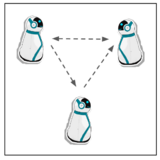
|
Centralized Training with Hybrid Execution in Multi-Agent Reinforcement LearningPedro P. Santos, Diogo S. Carvalho, Miguel Vasco, Alberto Sardinha, Pedro A. Santos, Ana Paiva, Francisco S. Melo arXiv, 2023 arxiv / We introduce hybrid-execution, a novel paradigm for cooperative multi-agent systems where agents can passively share their observations at execution time, conditioned on an imperfect communication system. |
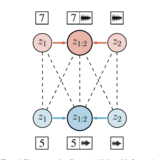
|
Geometric Multimodal Contrastive Representation LearningPetra Poklukar*, Miguel Vasco*, Hang Yin, Francisco S. Melo, Ana Paiva, Danica Kragic International Conference on Machine Learning (ICML), 2022 link / code / We show how contrastive learning can be used to learn multimodal representations that are robust to missing information at test time. We evaluate our approach in supervised, unsupervised and reinforcement learning tasks. |
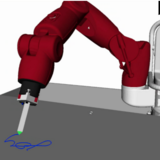
|
Perceive, Represent, Generate: Translating Multimodal Information to Robotic Motion TrajectoriesFábio Vital, Miguel Vasco, Alberto Sardinha, Francisco S. Melo IEEE/RSJ International Conference on Intelligent Robots and Systems (IROS), 2022 link / We design a robotic system that is able to perceive multimodal instructions from human-users to execute handwriting tasks. |
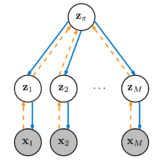
|
How to Sense the World: Leveraging Hierarchy in Multimodal Perception for Robust Reinforcement Learning AgentsMiguel Vasco, Hang Yin, Francisco S Melo, Ana Paiva International Conference on Autonomous Agents and Multiagent Systems (AAMAS), 2022 link / code / We introduce MUSE, a multimodal representation learning module for RL agents that allows the robust execution of tasks, regardless of the available modalities at execution. |
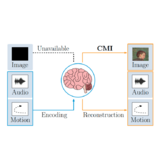
|
Leveraging Hierarchy in Multimodal Generative Models for Effective Cross-modality InferenceMiguel Vasco, Hang Yin, Francisco S. Melo, Ana Paiva Neural Networks (Special Issue on AI and Brain Science: Brain-inspired AI), 2021 link / code / We investigate the problem of cross-modality inference (CMI) in multimodal generative models and show the potential of considering hierarchical representation spaces. We contribute with a novel multimodal MNIST-like dataset. |
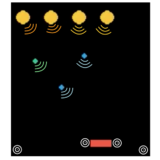
|
Playing Games in the Dark: An Approach for Cross-modality Transfer in Reinforcement LearningRui Silva, Miguel Vasco, Francisco S Melo, Ana Paiva, Manuela Veloso International Conference on Autonomous Agents and Multiagent Systems (AAMAS), 2020 link / code / We propose a framework that allows RL agents to transfer policies across different modalities (even to unseen ones during policy training!). We also contribute multimodal Atari environments. |
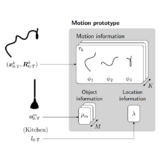
|
Learning Multimodal Representations for Sample-efficient Recognition of Human ActionsMiguel Vasco, Francisco S Melo, David Martins de Matos, Ana Paiva, Tetsunari Inamura International Conference on Intelligent Robots and Systems (IROS), 2019 link / We propose a representation for sample-efficient motion recognition of human users in a household environment. |
TeachingFDD3359 Reinforcement Learning, PhD, KTH Royal Institute of Technology - Spring 2024 DD2430 Project Course in Data Science, MSc, KTH Royal Institute of Technology - Fall 2023 Planning, Learning and Intelligent Decision-Making, MSc, Instituto Superior Técnico, University of Lisbon - Fall 2022, Fall 2021 Computation and Society (AI Ethics), BSc, Instituto Superior Técnico, University of Lisbon - Spring 2019, Spring 2020 |
StudentsNona Rajabi, KTH Royal Institute of Technology (co-supervised with Danica Kragic and Mårten Björkman) Farzaneh Taleb, KTH Royal Institute of Technology (co-supervised with Danica Kragic and Mårten Björkman) Bernardo Esteves, Instituto Superior Técnico, University of Lisbon (co-supervised with Francisco S. Melo) Afonso Fernandes, Instituto Superior Técnico, University of Lisbon (co-supervised with Francisco S. Melo) Bernardo Esteves, Instituto Superior Técnico, University of Lisbon (co-supervised with Francisco S. Melo) Fábio Vital, Instituto Superior Técnico, University of Lisbon (co-supervised with Alberto Sardinha and Francisco S. Melo) |
|
Design and source code from Jon Barron's website |